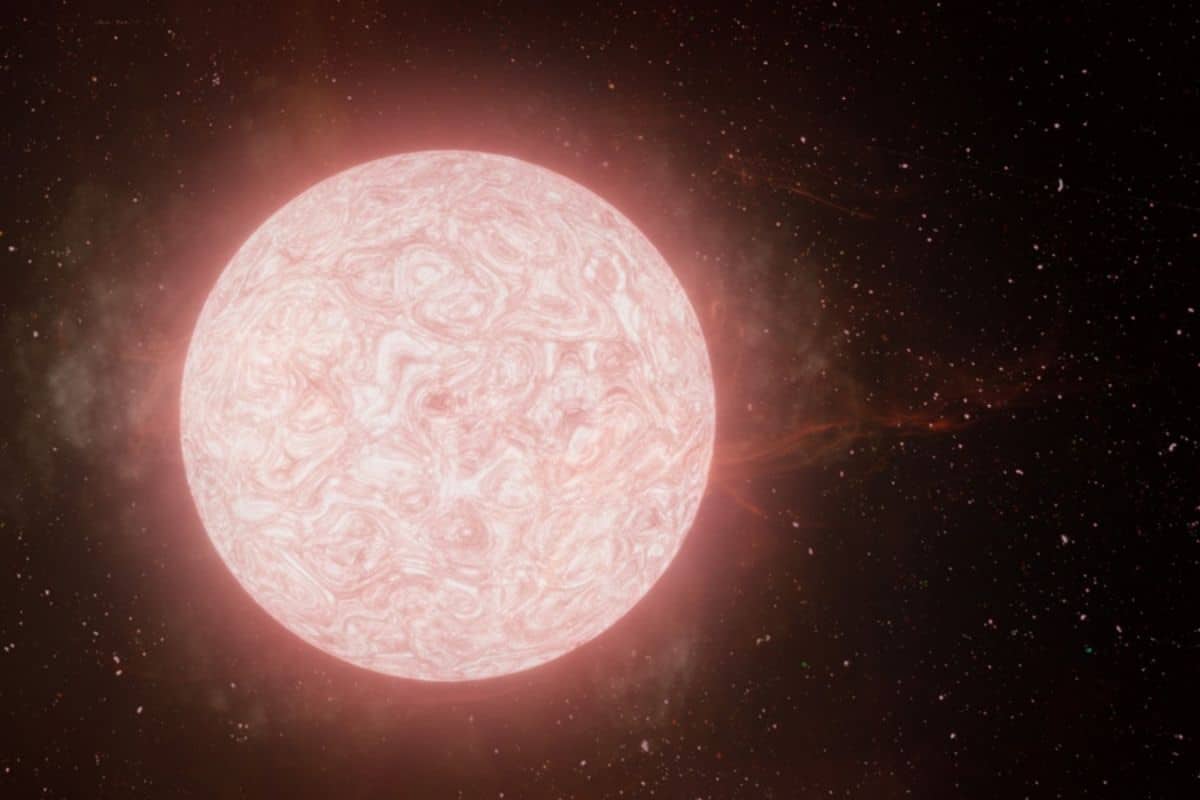Astronomers observed the last 130 days before its deadly explosion.
Astronomers have long suspected that massive stars transform into so-called red giants at the end of their lives. After a few hiccups, it then explodes in a classic supernova that can be seen throughout the universe. However, no one has ever seen this scenario happen in real life. Until now. “This is a breakthrough in our understanding of the last days of massive stars just before their death,” said study leader Wayne Jacobson-Gallen.
Doomed red giant
For the first time ever, astronomers have been able to follow the dramatic end of the life of a red giant doomed. They witnessed the last 130 days of the dying star before it exploded in a stunning Type II supernova. “We’ve never seen what happens to a red giant before it explodes in a supernova,” Jacobson Gallan said. “For the first time, we saw a super red giant explode.”
Write supernovae
Supernovae can appear in two ways. For example, a supernova can occur when white dwarfs in binary star systems (Type Ia) explode. In addition, Types II, Ib, and Ic occur when massive stars reach the end of their lives and then form neutron stars or black holes.
Researchers tracked down the doomed red giant using the Pan-STARRS telescope, located on the Haleakala shield volcano in Hawaii. It turns out that the star emits a huge amount of light. A few months later, a supernova lit up the night sky.
Supernova 2020tlf
The team quickly captured the powerful flash and obtained the first spectrum of the energetic explosion, which they named the 2020tlf supernova. The data showed that the star was surrounded by gas at the time of the explosion. Perhaps it’s the same gas that the Pan-STARRS telescope actually picked up a few months ago and that was violently ejected from the star at that time.
Supernova SN 2020tlf, photographed by the Pan-STARRS telescope. Photo: University of California at Berkeley
Even after the fatal explosion, researchers continued to closely monitor the star. Based on the newly collected data, the researchers determined that the red giant was located in the spiral galaxy NGC 5731, a celestial body about 120 million light-years from Earth. The mass of the star was about ten times the mass of our sun.
calm
The discovery of the red giant challenges previous theories about how the failed red giants acted just before their death. So far, the “death struggle” of the previously observed giant red giants has been relatively calm; No violent volcanic eruptions or luminous emissions have been reported before. However, new observations show that the red giant in the current study shone brightly in its final days.
At the end of its life, the red giant becomes unstable and explodes a large amount of gas before it explodes in a supernova.
This means, according to the researchers, that at least some of the red giants undergo significant internal changes, which then lead to a turbulent release of gas just before the collapse. “It was like watching a ticking time bomb,” said researcher Raffaella Margotti. “We have never witnessed such violent activity on a dying red giant.”
The researchers plan to “catch” more supernovae to better understand the process of star death. Because there is still much to learn. “I’m particularly excited about all the new ‘unknowns’ that have been unlocked,” Jacobson Gallan says. “If we discover more events like SN 2020tlf, we may broaden our understanding of the final months of stellar evolution. The ultimate goal is to unravel the mystery of how massive stars spend the last moments of their lives.”







